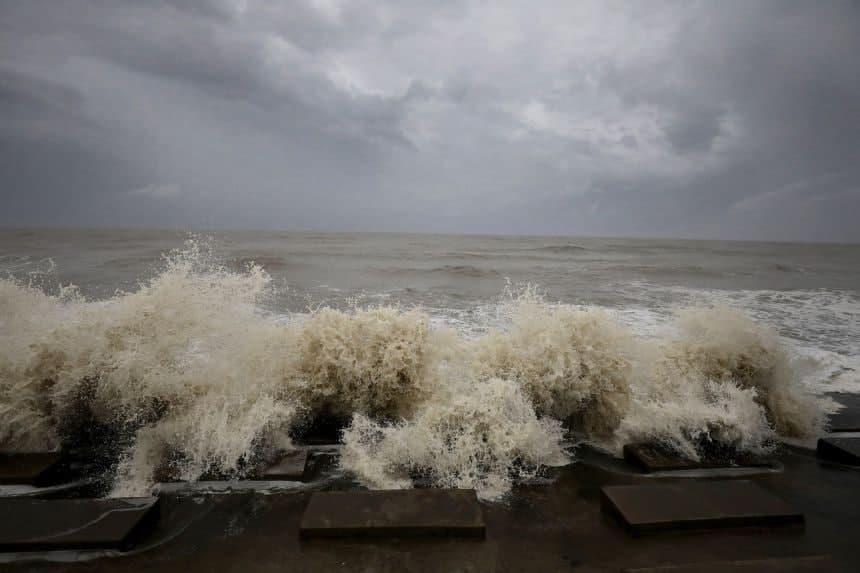DIGHA, May 26 (AFP) - Heavy rains and howling winds lashed eastern India on Wednesday (May 26) as the COVID-19 stricken country's second cyclone in as many weeks battered the coast, forcing more than 1.2 million people to seek shelter.
Weather officials said the "very severe cyclone" was expected to hit Odisha and adjacent West Bengal, with some effects felt even in Bangladesh, although the neighbouring country is not in the storm's direct path.
West Bengal's chief minister, Mamata Banerjee, told reporters that about 20,000 mud houses and temporary shelters had been damaged in the state.
"I have not seen anything like this before," said another state minister, Bankim Hazra, after seawater gushed into the low-lying areas of Sagar island in the Bay of Bengal and the tourist town of Digha, where a police station was flooded.
"Successive high tides battered the coastline," he added. "It is inundation all around and villages are cut off."
Many scientists say cyclones are becoming more frequent and severe in the northern Indian Ocean as climate change warms the sea.
Last week Cyclone Tauktae claimed at least 155 lives in western India. The latest system, Cyclone Yaas, has forced the evacuation of more than 1.2 million people in the eastern states of West Bengal and Odisha.
The Indian Meteorological Department said landfall began about 9am (11.30am, Singapore time) and warned that it would generate waves higher than rooftops in some areas.
Coastal areas experienced wind gusts up to 155km an hour and pounding rain.
"We have been experiencing heavy rainfall and strong winds since last night," said Bibhu Prasad Panda, a resident of Balasore district in the storm's path.
"Several trees have been uprooted. The cyclone has also led to snapping of overhead electricity cables."
Police said they had rescued 10 people after their boat capsized near shore in Odisha's Jagatsinghpur district on Tuesday. Naval base Chilka is monitoring ships in the area and is ready for rescue operations, the Indian Navy said.
A tornado that preceded the storm left two dead electrocuted as it tore through West Bengal's Hooghly district, authorities said.
Kolkata, West Bengal's main city, ordered its international airport to shut down for most of Wednesday. The airport in Odisha's capital, Bhubaneswar, followed suit.
"Every life is precious," said Odisha's chief minister Naveen Patnaik as he appealed for people not to "panic" and to move away from the coast.
A record 4,800 disaster workers had been positioned in the two states, equipped with tree and wire cutters, emergency communications, inflatable boats and medical aid, the National Disaster Response Force said.
Weather officials in Bangladesh said the storm was likely to swamp low-lying areas of 14 coastal districts, bringing tides 0.91m to 1.22m higher than normal, and advised fishing boats and trawlers to stay under shelter.
Some of the deadliest storms in history have formed in the Bay of Bengal, including one in 1970 that killed half a million people in what is modern-day Bangladesh.
Odisha's worst-ever cyclone, in 1999, killed 10,000 people. Last year Cyclone Amphan, the worst since 1999, caused widespread devastation but timely evacuations meant fatalities were fewer than 150.
